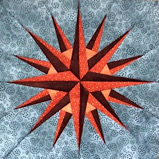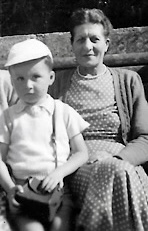Des Lewis will be 77 years old on 18 January 2025
Those who have read these episodic brainstorming reviews of mine must know they are very personal — rough-shod and spontaneous. Synchronicity and anagram mixed. I know they are not professional, never potentially publishable other than in the madness of my head, but I do hope they show grains of dark truth and cosmic panache.

These Des Lewis Gestalt Real-Time Reviews were founded in 2008.

‘What’s the loveliest word in the English language, officer? In the sound it makes in your mouth, in the shape it makes on the page? What do you think? Well now, I’ll tell you: E-L-B-O-W. Elbow.’ — THE SINGING DETECTIVE

“How shall a man find his way unless he lose it?” — Walter de la Mare

To any current genre author I have reviewed before — if you have a new story recently published or soon to be published in a collection or anthology, you may have a review by me of the story that also showcases where it is published. See HERE. (This is because I am no longer well enough to review as many books as I once did.)
Fresh Fictions, free to read HERE.
No AI input in preparation of my texts whatsoever.
THE NEW NONSCENIC
Photos here: https://conezero.wordpress.com/2024/02/24/d-f-lewis-recent-photos-1/




Pages 9 – 22
“At dusk or by night the streets do seem to take on an Expressionist feel.”
I have entered gently so far into this gently personal (W.G. Sebald-like?) portrait of post-reunification Berlin by John Howard where he seems to have travelled several times alone or with friends. It has John’s engaging textured prose to which I have grown accustomed over the last few years via his fiction. Somehow he conveys the city’s genius loci very strongly with the lightest of touches, a sense of being both lost and in control at the same time.
I do not know yet where this book is going but I do not intend to divulge here whether this excellent travel document becomes just that from beginning to end or whether it radiates into wider, more philosophical, more poetic, more fictional avenues. I shall conceal from you either its straightforward gazetteer qualities or its soul as literature. Perhaps it will become both. CAVEAT: I have visited Berlin twice in recent years with my wife, both occasions a brief visit as part of a coach party in transit, so John will probably be able to convince me of anything! Pinned down willingly not by a city’s Fernsehturm but by a writer’s amenable pen…
Pages 22 – 39
“…but now I am where I am.”
What I can tell you is that with the evolving street names that are involved walking around a prose gazetteer, such names automatically also carry a historical panoply – even the concept of historical figures gaining or losing a street. The Art of Wandering embodied by this book so far is teeming with history as well as urbographical atmospheres and cartographic grapplings, and the up and down graphs of any historical figure’s popularity or disgrace. Monuments and other memorials, too. As in the Thomas Phillips book, read in the last few days, there is a Passion of (or for) Passiveness here, with things now quieter than their history (isn’t that always the case, though, from the relative ivory tower of your body-and-mind at the vantage point of which part of history where (when) you happen to be standing until you are no longer an ivory tower (my own rambling or wandering, not the book’s!)?). But now I am where I am. With Howard in Berlin, secondhand bookshops, a place where books were once burnt, places where the city once subsumed villages, buildings made from the marble remains of a dictator’s buildings, the just missed chance encounter with an organ recital…
Pages 39 – 56
“They say there will be a wall in the head for a long time.”
The Art of Wandering, as Howard, the new Machen, perhaps, who wandered an older London, gently leads us from Berlin’s flea-markets to modernist system-building and sculpture, ‘man-size in marble’ — and I sense I am enjoying being within a minimalist, passive symphony by Glass; I am totally engaged. I am simply THERE. But there is a paradox inherent in what I just said. There is also a complexity involved, as recognised by Howard himself when explicitly mentioning a novel by Henry James that he is reading while staying in Berlin. And this, in turn, contrasts with what he said in an earlier section of this book about reading plays because he can’t face long blocks of prose. A wall to be taken down to reunify us with the tentacular clauses…
As an intermission in this review, here is a photo of Berlin taken by the book’s author, a photo that has been on-line for over a year: http://nullimmortalis.wordpress.com/2012/04/05/our-last-balcony-dan-ghetu-photograph/#comment-3582
Pages 56 – 66
“…Berlin is spread out along its horizon;”
A new day for me, as I further explore Howard’s Berlin and its pervasive past. The tentacular clauses, aforesaid, are an ideal analogy now as backdrop to the passive simplicity in the art of wandering, as I think about the emerging depth of each deceptively straight-lined horizon, where, here, the gestalt of leitmotifs like Nazi history and its consequent effect on street names, the mix of the now missing Wall’s no man’s land and its turning into something else even as one looks, a vast time of change plus a split second change within the mind of a single observer.
The cross that ended spiking the ground from a dynamited church tower reminds me of the earlier pinning by the power of the pen and the horizon-breaking Fernsehturm, – and the piercings and tattoos of the individuals that now populate every city including Berlin, as described by Howard. From this increasingly complex horizon or time-line, we are also tempted to dwell on more mundane matters, such as seeking some favourite coffee or choosing some clothes for Howard’s friends. All serving to make this place, Howard’s place, his own pervasive past, actually live and breathe today in my reading-room of the brain. If Cities can live and breathe? Words certainly can.
From Foreword page of John Howard’s ‘The Emperor’s Pavement’
‘The Emperor’s Pavement’ by Alexandra Abraham. Acrylics, mixed media and 23 carat gold leaf.
The latter picture is unconnected to the book being reviewed.
There is a quote at the beginning of John Howard’s book that is taken from WB Yeats’ “Byzantium” and it contains the words ‘the Emperor’s pavement’.
Pages 66 – 80
“And Lukas’ apartment doesn’t have a mere balcony; it has an entire small terrace, inserted into the sloping roof.”
And from there an unknown distant church is spotted that the narrator vows to find when he gets the chance. Like unknown things I’ve seen in this book.
In this section of the book’s stiff textured paper-pages, the cross-section of the genius loci develops, ‘off the shelf’, modern, old, and mixtures of all three, gothic vestigial to baroque, and probably vice versa. Grosz, for me, its own Wyndham Lewis. Honecker’s sun. And Marx and Engels like Lewis chessmen. And lost souls in bars like past participles seeking their present tense from….
“Prepositions are small but deadly.”
The only possible drawback to this book so far is that its text’s few minor typos do begin to approach a level that is uncomfortable. Like tiny chips off that earlier Wall in the head.
“One morning, some months after my last peace pamphlet, ‘The Emperor’s New Clothes’, had been published and forgotten, the news came through that the Berlin Wall had been broken and was coming down.”
— Oliver Postgate (creator of Bagpuss, The Clangers, Ivor the Engine, Noggin the Nog etc), quoted from ‘Seeing Things: A Memoir’
Pages 80 – 95
“The train curls through the affluent, leafy suburbs of south-western Berlin. Bright stations glide past.”
I have been Seeing Things, too, with John Howard’s Memoir, whether that curling pavement or “the heft, the strength, the dream that convinces” me of new clothes? The duality’s stress-test is paradoxically in the passiveness of wandering, gentle wandering but never wild rambling. This is the optimum travel memoir (something I do not normally read) that conveys the essence of more than just travel, but history, the hidden structures that uphold an architecture of thoughts as well as of physical buildings, exchanging spies for spies, history accentuated as well as being “neutralised by having had its swastikas filled in” like an innocent child’s crayoning, the mind’s ‘allotment colony’ or ‘soul village’, the understated and relentless shame and shambles of humanity as well as its proud hopes, mixing the past and the future, and just the simple task of helping someone move house. From walls to walls. “…the Matter of Berlin.”
end
There seems to be a direct Berlin linkage to the first story here: https://dflewisreviews.wordpress.com/2013/10/05/cities-and-thrones-and-powers-john-howard/
The Silver Voices by John Howard
The Defeat of Grief – by John Howard
Secret Europe by John Howard and Mark Valentine
NUMBERED AS SAND OR THE STARS – John Howard
The Emperor’s Pavement by John Howard
Cities and Thrones and Powers by John Howard
================
Individual stories in:
Cinnabar’s Gnosis
The Master in Café Morphine
This Hermetic Legislature
Rustblind and Silverbright
Horror Without Victims
The First Book of Classical Horror Stories
https://dflewisreviews.wordpress.com/complete-list-of-zagava-ex-occidente-press-books/ for my complete list of Zagava – Ex Occidente Press books.
Any of my WordPress sites marked as private can be reached by other WordPress users by inserting their normal details then clicking ‘request access’.